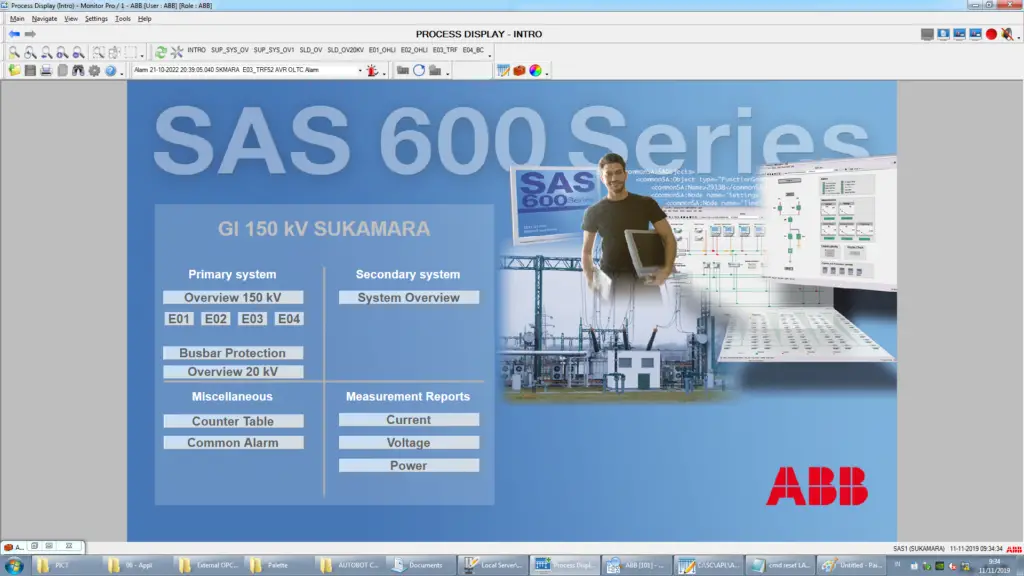
What is the difference between SCADA and RTU?: SCADA (Supervisory Control and Data Acquisition) and RTU (Remote Terminal Unit) are both key components of modern industrial control and automation systems. While they both play important roles in such systems, they differ in their functions and capabilities.
IEC 101 vs. IEC 104: Understanding the Differences
What is the difference between SCADA and RTU?
A SCADA (Supervisory Control and Data Acquisition) system is a software package used to monitor and control industrial processes and equipment. It provides a central control platform that gathers and processes data from field devices, such as sensors and actuators, and presents it to operators in a graphical user interface (GUI). The GUI allows operators to monitor the system in real-time, detect abnormalities, and respond to alarms.
One of the primary functions of a SCADA system is data acquisition. It collects data from various sensors and devices located throughout the industrial process, such as temperature, pressure, flow rate, and level measurements. This real-time data is crucial for operators to make informed decisions and take appropriate actions.
Once the data is acquired, the SCADA system processes it to provide useful information and insights. It performs calculations, statistical analysis, and data filtering to identify patterns, trends, and anomalies. For example, it can generate reports on equipment performance, energy consumption, production efficiency, and other key performance indicators.
The processed data is then visualized and presented to operators through the GUI. The GUI typically consists of different graphical elements, such as real-time displays, trend charts, tables, and alarm panels. It allows operators to have a comprehensive overview of the industrial process and easily identify any abnormalities or issues that require attention.
In addition to data visualization, a SCADA system also enables control functionalities. Operators can use the GUI to adjust setpoints, change operating parameters, and initiate actions such as starting or stopping equipment. These control actions are sent back to the field devices through the SCADA system, ensuring that the desired changes are implemented in the industrial process.
Enhancing Efficiency and Safety: The Power of HMI Software
Overall, a well-designed and properly implemented SCADA system plays a crucial role in optimizing industrial processes. It enhances operational efficiency, improves productivity, reduces downtime, and enhances safety. The ability to monitor and control multiple processes from a centralized platform empowers operators to make data-driven decisions, leading to improved overall performance and profitability.

On the other hand, an RTU (Remote Terminal Unit) is a hardware device that is installed at a remote site to provide communication and control between the central SCADA (Supervisory Control and Data Acquisition) system and field devices. An RTU plays a crucial role in various industries such as oil and gas, water and wastewater, power generation, and manufacturing.
An RTU typically includes input/output (I/O) channels for interfacing with sensors and actuators, ensuring seamless data acquisition and control capabilities. It acts as a bridge between the SCADA system and the various field devices, enabling the exchange of data in real-time. The I/O channels provide the RTU with the ability to monitor analog and digital signals from sensors, as well as send control signals to actuators for performing specific actions.
In addition to its I/O capabilities, an RTU is equipped with a central processing unit (CPU) responsible for data processing and executing control tasks. The CPU performs calculations, applies algorithms, and executes custom logic to make informed decisions based on the data collected from the field devices. This processing power enables the RTU to optimize control strategies, adhere to safety protocols, and ensure efficient operation of the entire system.
Understanding Substation Automation & IoT Concepts: A Complete guide for beginner
Furthermore, an RTU features communication interfaces that facilitate the transmission of data between the RTU and the central SCADA system. These interfaces can vary depending on the application and requirements, but commonly include protocols such as Modbus, DNP3, and OPC to ensure compatibility and interoperability. The RTU securely transmits data to the SCADA system, allowing operators and engineers to monitor and control field devices in real-time from a central location.
What is Remote Terminal Unit? A Basic Guide
In summary, an RTU is an integral component of a SCADA system, providing essential data acquisition, processing, and control capabilities. Its role is to collect data from field devices, such as sensors and actuators, and transmit it to the central SCADA system. By doing so, it enables remote monitoring, control, and optimization of industrial processes, contributing to increased operational efficiency, enhanced safety, and improved decision-making.
In summary, SCADA and RTU are both essential components of industrial control and automation systems, but they have different roles and capabilities. SCADA systems provide the central control platform for monitoring and controlling industrial processes, while RTUs provide the interface between the central SCADA system and field devices.

You must be logged in to post a comment.